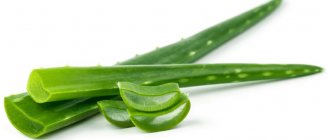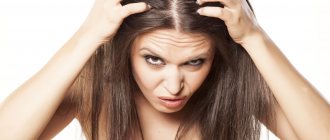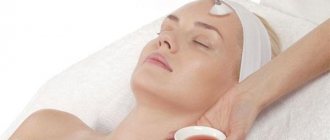Who can help take care of your skin after hair removal?
The question of what to do after depilation should be decided before the procedure begins by contacting specialists. If hair removal with wax is being done for the first time, it is better to go to a cosmetic clinic or office. A professional cosmetologist will tell you how to properly prepare for hair removal.
During the manipulation, you can become familiar with the correct technique so that you can do it yourself in the future. In addition, you should remember:
- if you have ever had skin allergies, you need to consult an allergist;
- For skin diseases, it would be useful to consult a dermatologist.
To eliminate any problems you may have, you can contact a beauty salon or a dermatologist. Usually, simple advice from friends or articles from the Internet help to cope with irritation without visiting a doctor.
To frequently asked questions about whether it is possible to go to the beach or to the pool after hair removal, because that is what it is done for, the answer is negative. The first days (2-3) should not be spent in the sun, go to the bathhouse, solarium, or take a bath.
How to remove irritation at home from legs, arms, face, armpits, bikini area
On the verge of perfection We tell the whole truth about depilation.
Such “beauty” is difficult to confuse with anything else, especially since there are still objective reasons - along with unwanted vegetation, the cells of the upper layer of the skin are also removed, which extremely traumatizes the dermis. Under no circumstances should such pimples be picked off or squeezed out; this will only worsen the situation and transfer inflammation to the deeper layers of the dermis. Despite the itching, scratching them would also be a big mistake. To quickly and safely teach you how to get rid of skin irritations, here are our recommendations. Today on the modern cosmetics market there are a large number of products for depilation of unwanted hair.
It is very important to choose a product that effectively removes unwanted hair.
Creams and other skin care products
What needs to be done to remove irritation:
- Wipe the skin with alcohol or any disinfectant liquid. Almost all alcohol-containing pharmaceutical solutions are suitable, for example, smearing “Chlorhexidine”, “Miramistin” or “Levomycetin”. You can use regular hydrogen peroxide or thermal water. Treatment is carried out three times a day for at least the first three days after hair removal.
- After treatment, apply a little Panthenol to the affected area, which is usually used for burns. A thick layer of this drug can heal minor injuries and scratches on the skin, as well as relieve inflammatory syndrome. After half an hour, wipe off the remaining unabsorbed Panthenol with an antibacterial damp cloth.
- An excellent remedy for sensitive skin in the bikini area, armpits, arms and face: add a couple of drops of essential tea tree to olive or almond oil. Treat the surface of the skin with this mixture. Additionally, you can use various types of alginate face masks.
- After all manipulations, it is necessary to moisturize the skin. Children's cosmetics are best suited for this. Bübchen oil has good reviews, as well as children's creams from this manufacturer.
- Folk remedies: attach an aloe leaf, cut in half. Suitable decoctions of medicinal herbs (chamomile, string, calendula, celandine, nettle and others), which must be used as a compress.
- During and after shaving, it is advisable to use special products that can be purchased at any cosmetic store. It is better to use a new and sharp razor, otherwise there is a high risk of damaging the skin with a dull blade.
Video for you: hair removal at home
Hair removal of the face and body is an important, one might even say necessary, procedure in the lives of modern women.
If inflammation cannot be avoided, and there can be many reasons for this, it is necessary to urgently take measures to eliminate this phenomenon.
Special cosmetics will be good helpers in this matter: thermal water, moisturizing baby cream, oil or milk. Following the recommendations of our article will help you achieve perfectly clean and well-groomed skin, on which no traces of recent hair removal will be visible. We also recommend that you familiarize yourself with the hair mask with nicotinic acid in this material.
Relieving irritation after waxing
Waxing is not a pleasant procedure. But a woman will go to great lengths for the sake of beauty. It’s much more offensive when, after enduring such a painful method, redness, rashes and even inflammation appear on the skin. When choosing this method of hair removal, you need to immediately think about how to relieve irritation after waxing.
Causes of irritation after waxing
Irritation can manifest itself in different ways. These may be rashes in the form of red dots, large pinkish spots, a feeling of tightness of the skin, dryness, flaking. Sometimes pimples and ulcers may appear. The reasons for its appearance may be the following:
- Light and sensitive skin types are most prone to the unpleasant consequences of hair removal.
- Often occurs after the first use of wax.
- During the procedure, dead particles of the upper layer of the epidermis are removed along with the hairs. This mechanical effect on the skin injures it and causes irritation.
- Low quality wax. To avoid this reason, when purchasing, you need to check expiration dates, recommendations about the product and manufacturer, as well as information about storage conditions.
- Allergy. May occur as a reaction to some wax components. If irritation does not go away for a long time, accompanied by itching or burning, you need to consult an allergist. You may have to choose a different method.
How to remove irritation after waxing?
When planning to wax, you need to think in advance about how you will get rid of irritation if it does arise. What should be done at the first unpleasant signs of the consequences of the procedure?
- If irritation occurs, it is necessary to treat the skin with hydrogen peroxide. It has a disinfecting effect and will reduce the likelihood of germs and dirt getting in. Then moisturize the skin with cream.
- Calendula decoction has a healing and calming effect. Soak a bandage or cotton wool in it and wipe the damaged area. To avoid dryness, after the procedure you need to apply a rich cream.
- A cut aloe stalk can come to the rescue. It should first be washed in warm water. First, wipe the irritated area with the juice of the stem, and then cut it into small pieces and apply it for 15 minutes.
- A good way to relieve irritation is to use oil after waxing. It can be either ethereal or plant-based. For example, a mixture of essential oils of lavender, chamomile and grape seed. The first two types should be taken 2-3 drops each, and the last – 10 ml. Rub the skin with this mixture and leave for about 40 minutes, then rinse.
Essential oil of rose or tea tree will help speed up healing. You need to mix 5 drops of any of these oils and 3 tablespoons of vegetable oil. In the absence of such ingredients, ordinary olive or sunflower oil will help out. It needs to be warmed up a little and applied to the skin using cotton wool.
May also help:
- anti-burn agents, for example, Panthenol, have an analgesic and antibacterial effect;
- baby powder and cream perfectly relieve irritation after waxing;
- Herbal decoctions of chamomile, string, and celandine have an anti-inflammatory effect and accelerate healing. They need to be wiped over the skin or applied as a compress for half an hour.
It is very important to relieve irritation at the first sign of its appearance, otherwise it may drag on and be more difficult to deal with.
The correct technique for hair removal using wax will help get rid of excess hair and prevent irritation and inflammation. First of all, you need to choose the appropriate wax option.
Types of wax:
- Cold wax. This method is painful and takes a long time. But it is recommended to use it for sensitive areas and removal of short and fine hairs.
- Warm wax. Provides speed, ease of use, respect, and hygiene. Suitable for any skin type. But its cost is more expensive than other types.
- Hot wax. It is capable of dilating blood vessels, so it should not be used for venous diseases. But the procedure with its use becomes painless.
The material has been selected. 5 days before waxing, you need to shave the desired areas with a machine. The day before the procedure, scrub the skin. After this, apply moisturizer.
Before applying wax, the skin must be washed, steamed to open the pores and reduce pain, and then dried thoroughly. There is no need to use any cosmetics at this stage. Then apply wax to the skin with a wooden spatula along the direction of hair growth. Press it with a strip of cloth or napkin. Wait until the product hardens and remove the strip with a sharp movement in the direction of the opposite direction of hair growth. Having completed depilation, the remaining wax must be removed using any oil, applying it to cotton wool. Sometimes the kit includes napkins for this purpose. This will help reduce irritation after waxing.
You can apply a cold compress if discomfort occurs in the areas where hair removal was performed. After 48 hours, the skin should be moisturized with lotion, cream or oil and these procedures should be continued every other day. On day 4-5, scrub the area of skin where depilation was performed and repeat 1-2 times a week.
Useful tips
- After the procedure, you cannot use a scrub or a hard washcloth;
- It is not recommended to use a shower for the first two hours;
- if the intimate area has been depilated, then you should abstain from sexual intercourse for 24 hours;
- During the first 24 hours after depilation, it is not recommended to use deodorant, talc, perfume, or self-tanning.
Various cosmetics can increase irritation after waxing. Baby soap without dyes or fragrances is suitable for body care.
Recommendations:
- for two days after the procedure, you cannot sunbathe, visit the sauna, swimming pool, or comb the depilation areas;
- if hair tends to grow in often, then the scrub should be applied already on the 2-3rd day and repeated 2-3 times a week. Don't forget to moisturize your skin after scrubbing.
Following simple rules will help you avoid unpleasant surprises after waxing. If severe irritation haunts you after each procedure, then you should consult a cosmetologist. He will help you choose another method or recommend a professional hair removal method.
Now let's discuss the article:
net-volosam.ru
Preparing for bikini sugaring
What is the danger of allergic eye swelling and how to relieve it?
Before treating the intimate area, you should know that sugar depilation of the bikini area is divided into two main types:
- Classic – symmetrical hair removal in the area of the groin folds, along the contour of the underwear neckline.
- Deep – hair depilation in the pubic area, perineum, inner thighs. If desired, you can leave some hair in the pubic area.
Preparing the skin for deep bikini sugaring begins a week before the session. Hair removal should be stopped in order to grow it back to 4-5 mm. If you used a razor, it will take about 1.5-2 weeks to grow due to the coarser hairs. The sugar mass cannot grip bristles that are too short. The result of trying to remove insufficiently grown hair will be that it will be missed and the procedure will have to be repeated.
If the length is more than 8 mm, then you will have to carry out regular depilation and grow them back to the desired size. You can use a trimmer or nail scissors. This is explained by the fact that the paste is applied to a specific area and can capture adjacent hairs that are too long. As a result, they will not be completely removed, but will break. The consequence of this will be the appearance of ingrown hairs and inflammation. It is recommended to perform peeling before sugaring a couple of days before the session.
Traditional ways to get rid of irritation
Facial depilatory cream
In emergency situations, if none of the above is nearby, folk remedies will help cope with irritation. Here are some simple recipes:
- Potato juice: three one potato on a fine grater, and then apply the resulting pulp to the irritated area for several minutes. After this, remove the potatoes, wash off the remains with warm water, and lubricate the irritated area with baby cream.
- Aloe compress: if you have this plant at home, then cut off its leaf, wash it and cut it in half, and then apply the fleshy part to the place where the redness appears.
- Turmeric mask: mix two tablespoons of turmeric with warm water, apply the resulting paste to the skin and hold for 20 minutes, then rinse with water. After the procedure, it is recommended to lubricate the irritated area with kefir.
- Chamomile decoction (celandine or calendula are also suitable): prepare a decoction from the herb that you have at home and make lotions with it several times a day.
- Parsley infusion: cut a bunch of parsley and pour boiling water over the greens, let it brew. Then wipe the irritated skin with the resulting infusion.
- Compress made from infusion of fir cones: crush the fir cones and pour boiling water over them, let it brew. Then you should make compresses from the resulting infusion (keep them on the skin for about 5 minutes).
- Tea tree (or eucalyptus) oil: mix 2-3 drops of essential oil with a tablespoon of olive oil. Apply the resulting mixture to irritated skin.
These are the simplest ways to relieve irritation for skin that has been “tortured” after hair removal. Many of the listed folk remedies can be easily implemented at home! Using these methods you can relieve irritation after depilation on your legs, armpits and bikini area, but be very careful with irritation on your face! If you do not know all the intricacies of removing excess hair from areas on the face, it is better to go to a beauty salon, where a specialist will perform the procedure for you. Read more about facial depilation in our articles:
I would like to finish today’s article with the opinion of one Swedish scientist who expressed the following thought: how do women do hair removal at home? In a small bathroom, where it’s damp, slippery, cramped and completely uncomfortable! It's no wonder that after depilation your skin becomes irritated! And if it appears constantly, maybe it makes sense to contact a cosmetologist who will carry out a full range of procedures in a cozy office?
Official medicine
Even if there are no special cosmetic or pharmacological preparations with a therapeutic effect at home, you can use cheap “improvised” products present in any first aid kit. This is hydrogen peroxide. You need to take the weakest concentrated one to avoid chemical burns to the skin, especially if it is irritation after waxing on the face.
Chlorhexidine and Miramistin are stronger agents; they are more suitable if irritation appears after waxing in the bikini area. But they are not enough in complicated cases, for which Streptocide powder diluted with water or a ready-made solution of Furacilin, Levomycetin are more appropriate. In this case, zinc, gentamicin or tetracycline ointments are suitable. As a last resort, iodine or alcohol will do.
There are many drugs that are not directly designed to combat skin irritation, but indirectly have a healing effect. Preparations based on panthenol (Bepanten, Panthenol), as well as Levomekol, Spasatel, BoroPlus, Pantestin, have these properties. All of these medications quickly relieve irritation after bikini waxing, which is the most difficult to treat.
Secrets for removing wax residue
If unpleasant consequences occur in the form of an adhesive substance at the waxing sites, you can use the following recommendations:
- Excess should be removed immediately;
- Do not wash off stuck wax particles with water. They instantly harden, severely tightening and injuring the skin;
- Cotton pads will not help solve the problem, but will only aggravate it, as pieces of cotton will stick together;
- The best option is to purchase products in advance to remove traces of unsuccessful depilation. The cosmetics industry has taken care of its perfection-seeking consumers and has released a series of products that remove wax easily and quickly. These can be special wet wipes or bottles with liquid formulations.
You should pay attention to them when purchasing materials and devices for waxing:
- If you have a fatty cream in your arsenal, you can use it. To do this, apply a generous layer of such cream over areas with stuck wax, let it sit for several minutes and wipe off with strong movements using cotton pads;
- If there is no cream, any vegetable oil or baby care oil will help. It should be applied to a soft cloth and wiped over problem areas. As a rule, the wax rubs off well. But not everyone likes the greasy marks left on the skin and staining clothes;
- An iron and a clean, lint-free cotton towel can also do the job. The hot ironed cloth is applied to the adhesive areas and the wax will remain on the towel once it cools. The most important thing with this method is not to get burned;
- Another method involves having a hairdryer. A waxing strip is applied to the depilated area, heated with a hairdryer on top and then removed. You should also be careful, you can get burned.
- To increase hair regrowth time, you should use anti-hair growth products.
Properly performed waxing is another step towards a beautiful and well-groomed appearance.
Post navigation
What to treat the skin after waxing
It’s a rare woman who doesn’t dream of getting rid of unwanted hair on her body. For many ladies, numerous experiments in pursuit of this goal lead to waxing. Long-term smoothness seems ideal, but more and more often beginners are faced with the question of how to remove wax from the skin after depilation.
Waxing is not an easy procedure, because before starting it is important to carefully prepare everything, especially if we are talking about a wax cartridge or a viscous mixture in a jar. For example, a mixture heated to the desired temperature must be applied in a thin layer using a spatula. Alas, already at this stage you can seriously “get into trouble” with a sticky substance. The excess on the spatula will definitely drip onto the skin and begin to dry out quickly. It is important to act quickly and accurately here.
The first rule of first aid when cleansing the skin is that it is impossible to wash off the mixture . You can hold an area of the body under running water as much as you like, but you will never be able to see a positive result. The effect will be the opposite, because, as wax depilation experts assure, a fresh drop is much easier to remove than an excess that has been on the skin for a long time.
Instead of water, it is much wiser to use any vegetable oil. It must be applied to a napkin or cotton pad in sufficient quantity and slowly wash off the residue. The thick stand will have to be rubbed for some time. A good way to get rid of drops of the mixture is with a rich lotion or cream. And that? and others can be found in any cosmetic store for mere pennies. The fatty substance is also applied to a napkin or cotton pad. The cream will not only help remove wax from the skin, but also prevent irritation and inflammation.
If all else fails or you can’t find fatty mixtures at home, you can remove the wax with a hairdryer.
Note that this method, although proven, is extreme and to some extent dangerous. So, to implement it, you need to warm the wax with warm air, and then remove it with a regular napkin. The danger here is the possibility of overheating the wax, which can lead to burns. Another option would be a regular linen or lint-free cotton towel. It is better if it is already used, but always clean. The fabric is ironed and the excess is applied. The wax is quickly absorbed into its surface.
It is worth saying that cosmetologists do not use such methods, having in their arsenal a proven and one of the easiest methods. Experts advise removing excess with the help of special napkins created specifically for wax depilation procedures. Small squares of non-woven material are soaked in a fragrant liquid that can remove the sticky mixture not only quickly, but also pleasantly. In addition, they are used very sparingly, which allows you to treat a large area of skin after depilation with one napkin. It’s not difficult to find wipes in any cosmetic store, or as part of a depilation kit with wax strips.
What to do after hair removal procedure
To avoid unwanted consequences, the skin must be thoroughly steamed before the procedure.
Important: Alena Zernovitskaya, a famous blogger, shared her AUTHOR’S recipe for a youthful face mask, which she has been using for more than 5 years! Read in full
After the procedure, two tasks should be performed: soothe the skin and disinfect it.
To avoid skin irritation, follow the tips below:
- The first thing to do after depilation is to eliminate microbes, the activity of which can provoke the appearance of an inflammatory process. To do this, disinfect the skin with chlorhexidine, thermal water or hydrogen peroxide. Do not use alcohol or baby powder for this purpose. The first dries out already irritated skin, and the second clogs the pores.
- Remove hair as usual. Try not to treat the same area more than 2 times. Try to guide the razor with the hair growth, not against it.
- Do not rub your skin under any circumstances. To remove excess moisture, just gently pat the area of skin with a towel.
- Soften and soothe the skin. Wash your hands thoroughly, apply a little baby oil or special cream to your fingers after depilation. Rub the product in with soft, smooth movements.
If you do not want to allow irritation to appear on your skin, avoid sunbathing and going to the solarium for several days after depilation.
Remember: even five minutes of exposure to the sun after hair removal is fraught with inflammation and the appearance of pigmentation.
How to eliminate irritation in the bikini area
There are several ways to resist unpleasant consequences. They should be used immediately after “manipulating” with wax, without waiting for an aggravation:
- Wipe the skin immediately after the procedure with hydrogen peroxide
, mild (alcohol-free) tonic or thermal water. You can not rub the water in, but spray it from a spray bottle. It is strictly not recommended to wipe the treated area with alcohol or alcohol-containing products, as they dry out the skin, slowing down its regeneration. Due to its action, hydrogen peroxide is often used for cosmetic purposes. Follow the link to read how to use it. - Mix tea tree oil with any other vegetable oil in a ratio of 1:4
. Apply the mixture with a cotton swab to the treated area. Or add 4 drops of tea tree oil to 250 ml of boiling water. Let cool and spray from a spray bottle onto irritated skin. - If you are not going to leave the house after depilation, then after applying the antiseptic, the skin should also be lubricated with warm vegetable oil. Any kind you have on hand will do (sunflower, flaxseed, olive, etc.). Products with mineral oil are not suitable! Mineral oil does not penetrate the skin and is unlikely to relieve inflammation.
- After removing facial hair, irritation can be relieved with aloe juice and pulp
(to lubricate redness). Aloe can also be used in the armpit and bikini area. Juice or pulp will prevent and relieve irritation that has already appeared. You can simply tear off a fleshy leaf, wash it, remove the skin and apply it to the area. Or you can grind it and use the pulp. - You can wipe your face with an ice cube
. The result will be even more effective if it is a frozen herbal decoction. You can read the link if hair removal was performed on the face. - Use aftershave gel
. You can easily “borrow” it from your husband. It will be especially good if it is a gel for sensitive skin, without alcohol. - You can use a decoction of chamomile, string, calendula or celandine. Rinse the skin with the medicine immediately after depilation or (if necessary) make a compress.
- You can also use pharmaceutical antiseptics
: furatsilin, miramistin, chlorhesedin. Zinc ointment will also relieve irritation in the bikini area. - Severe irritation can be relieved with a burn remedy
that contains panthenol. These can be medications (Bepanten; Depanthenol, etc.). You can also use cosmetics that are recommended for use after sunbathing.
In the video - how to get rid of irritation after waxing in the bikini area:
After removing facial hair, give up your usual creams for a couple of days, replace them with hypoallergenic ones or products with panthenol.
How to avoid
Proper preparation for hair removal will reduce the extent of its manifestation. Well-cleaned and pre-prepared skin will thank you. The following useful recommendations can be highlighted:
- Before removing hair, cleanse your skin with a scrub - about 24 hours in advance. Abrasive particles will remove dead skin cells of the epidermis and “open” the path to the hair root. They will remove obstacles on the way to the hair follicle. You can use the scrub a couple of hours before the procedure or immediately before it. If the skin is very sensitive and thin, it is better to do this a few hours in advance.
- Clean the skin with a disinfectant composition - it can be hydrogen peroxide, alcohol up to 70 degrees, Miramistin or any pharmacy product.
- You can pre-steam the skin. Then it will be easier for hair follicles to pass through the open pores on its surface, and they will injure the skin less. Cosmetologists do not always praise the steaming method.
- If you're using an epilator, you can apply a lot of cold to your skin. Then the pain sensations will further decrease, since the reaction of the nerve endings on the body will dull.
- After the procedure, be sure to apply a moisturizing cream to the areas of the body “affected” by hair removal: “Bepanten”, “Panthenol”, regular children’s cream - it doesn’t matter. It’s good if the product contains soothing components - aloe vera, plant extracts.
- Before going to the beauty salon, do not visit the sauna or bathhouse for 3 days. It is not recommended to carry out steaming procedures, but you still need to take a shower.
After hair removal it is not recommended:
- wet the skin for 2-3 hours (it is advisable to abstain longer - up to 12 hours);
- sunbathe for 2-3 days;
- use a scrub (you can only do it after a day or two, not earlier);
- use alcohol tinctures and lotions.

Cosmetologists recommend leaving the area that was subjected to the procedure in its natural state and ensuring comfort and peace - for example, do not wear underwear and choose loose cotton clothes (if you had bikini hair removal), do not wear tight trousers and tights (when removing hair on your legs).
The face area is especially sensitive, and irritation above the upper lip or in the eyebrow area is the most unpleasant consequence of hair removal. To get rid of redness that has already formed, cosmetologists recommend treating the area with thermal water or a mild tonic without alcohol. You can use regular peroxide or herbal decoction. They also recommend freezing herbal decoctions in cubes, which will not only help to urgently relieve irritation, but will also be useful in daily dermal care.

After depilation, irritation: what to do, how to relieve it?
Epilation with wax is one of the effective methods of removing hair on the body and face. However, having chosen this method, you should know that irritation often occurs after the procedure, and in some cases an inflammatory process may begin. It is important to be able to relieve irritation after depilation.
Causes of irritation
The skin irritation reaction can manifest itself in a rash of red dots, large spots, pustules, or it can be manifested by skin tightness, dryness, and exfoliation of dead cells.
The epidermis may react this way due to the following factors:
- Delicate light skin.
- First waxing experience.
- Dead cells are removed from the hairs, which injures the epidermis.
- Poor quality wax.
- Allergic response to wax composition.
You should consult a doctor if the itching and burning after the session does not go away for a long time.
Experts in the field of cosmetology recommend resorting to several methods of skin treatment if irritation appears after waxing.
- Treat the irritated area with hydrogen peroxide. This reduces the risk of infection. Then the skin should be lubricated with moisturizer.
- Wipe the problem areas with a cotton pad soaked in a decoction of calendula (chamomile, celandine) - this will soothe the itching and heal the damage. After treatment with the decoction, lubricate the skin with a rich cream.
- Aloe juice and pulp are applied to the affected area for 15 minutes.
- Rubbing with aromatic and vegetable oils perfectly relieves irritation. So, 2 drops of lavender and chamomile oils are mixed with 10 ml of grape seed oil. Wipe the skin with the composition, leave it on for 40 minutes, then wash it off.
- Heated olive or sunflower oil also copes well with the problem. The oil is applied to the skin with a cotton pad.
- Panthenol perfectly relieves pain and disinfects redness.
- Baby hygiene products in the form of powders and creams relieve burning and itching.
Skin irritation should be treated immediately after the appearance of a rash, redness, etc.
We recommend!
Lucem - a product for women's health
Order.. "
Preventing irritation
Compliance with the rules of depilation and high-quality raw materials will allow you to avoid the unpleasant consequences of the procedure. After depilation for some time it is recommended:
- Do not use a scrub or rough washcloth for 24 hours.
- Take a shower only 2 hours after hair removal.
- Treatment of the intimate area requires abstaining from sexual intercourse for 24 hours.
- Do not use perfume, powders, or deodorant for 24 hours.
- Use baby soap for body care for a week.
- No sunbathing, no going to the sauna or swimming pool for two days.
- Do not comb treated areas.
- If hair grows in, then treat the skin with a scrub 2 days after the procedure, followed by moisturizing with cream, repeat every 2-3 days.
If irritation appears after each session, then it is necessary to change the depilation method.
In addition to following measures to prevent irritation, for a good safe result you need to choose the right wax. When purchasing wax, you should pay attention to the expiration date and storage conditions of the raw materials.
There are three types of wax for different purposes.
Cold - suitable for use on sensitive areas and for eliminating fine short hair. The method is quite painful and lengthy.
Warm - easy to use, hygienic, gentle on the epidermis. Suitable for any skin.
Hot - dilates blood vessels, not recommended for varicose veins. Its use is virtually painless.
Irritation after depilation
Waxing
After choosing the right wax, you can begin preparing for depilation and directly carrying it out.
- Remove hairs with a razor 5 days before the session.
- Scrub your skin one day in advance.
- Before the procedure, thoroughly wash and steam the dermis and dry. There is no need to apply any creams at this stage.
- Using a wooden or plastic spatula, cover the skin with wax, moving from top to bottom.
- Cover the wax with a strip of cloth or napkin and press down.
- After the wax hardens, you need to sharply separate the tissue from the skin from bottom to top.
- Remove excess wax using any available means: oil, special liquid, wax removal wipes.
- If desired, you can use cold lotions.
After two days, the skin is moisturized with cream, lotion, and oil.
vremya-krasoti.com
Description of the procedure
Laser hair removal removes excess hair. This happens due to the effect of a laser beam on the hair follicles, they are cauterized and destroyed. After a laser hair removal session, the treated area slows down and then completely stops hair growth.
In one session, the laser beam only treats a certain area that it covers, so one procedure does not give the full effect. In one procedure you can get rid of unwanted hairs above the upper lip or in the armpits.
When epilating the bikini area or legs, you will need to repeat the procedure, the frequency of which depends on the individual characteristics of the person, skin type, hair thickness, etc.
Laser hair removal should be carried out only in institutions that specialize in cosmetology and have in their arsenal professional craftsmen and the necessary equipment for hair removal. In addition, the clinic must have a license to practice cosmetology and use a laser device in particular.
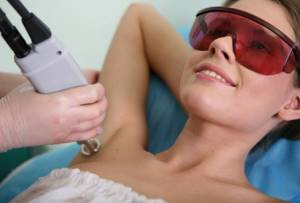
Epilator priorities
- Lasting results
Removing unwanted hair using a razor does not have long-lasting results. With its help, only half of the hair is removed. Its lower part remains under the skin and does not look aesthetically pleasing after shaving.
On the second day after shaving, hair emerges from under the top layer of the epidermis and is detected by running your hand over the surface. Vegetation becomes tough and prickly.
- Saving money
Using a home epilator you can significantly save on visiting expensive salons. It is possible to carry out the procedure for removing vegetation in any areas at home, applying the rules for using a modified device.
- High-quality hair removal without additional devices
The epilator can be used without the use of additional cosmetics: cream, foam, soap, balms. When carrying out the procedure by other methods, the presence of third-party objects and manipulations (wax strips, warming devices) is assumed.
A positive quality of the hair removal device is its portability. You can take the car with you on any trip. Easy maintenance and simple processing of parts after use are the leading qualities of the device.
- Autonomous operation mode
Upgraded devices do not have wires. Such units receive electricity from a power supply built into the lower base of the device. The epilator can be used for an hour.
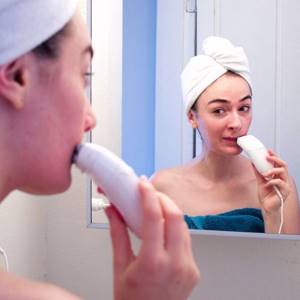
Why irritation may occur after hair removal
Dry skin and the appearance of unsightly pimples and rashes plague most women. There can be many reasons for the occurrence; in especially severe cases, such a procedure is generally prohibited.
Depending on the method used, rashes and inflammation may appear from poor-quality wax or an allergic reaction to such components. If this is the case, you should abandon the waxing procedure and look for an alternative. Irritation after shaving can be associated with damage to the surface of the skin, so this procedure is gradually being phased out, giving way to more progressive methods.

The successful use of a home electric epilator is largely due to the technique of performing the procedure. Before purchasing, it is better to familiarize yourself with the characteristics and read discussions on the forums. Most often, irritation and rash will appear from models with metal plates. Epilators with ceramic plates are considered better in this regard, but their cost is much more expensive.
When removing unnecessary hairs from the body at home, you can also use special depilatory creams for the face or body, but this procedure will already be called depilation, because the hair is not removed from the root, but simply the visible part.
If your acquaintance with this procedure has just begun, irritation and satiety will simply be an integral part of the hair removal session. Gradually, the skin will “get used to” and will not react so violently to such intervention.
Preventative measures against irritation:
- The skin should be clean, ideally also treated with a disinfectant solution. Alcohol, hydrogen peroxide, thermal water and any other antiseptic are suitable for this.
- It is best to steam the skin a little before epilation. This way, the hairs will be less painful and easier to leave their place.
- After removing the hairs, the skin is also wiped with a disinfectant liquid, and then moisturized with a neutral cream.
- Children's cosmetics are excellent for these purposes: they are more hypoallergenic and perfectly soften sensitive skin.
- It is best to do hair removal in the evening; overnight the skin will recover a little and will not be frightening with an unnatural appearance.
If after all the above manipulations a rash still appears, perhaps you should make an appointment with a good cosmetologist and try a salon procedure. Now there are many alternative methods, for example, laser or photoepilation. They are relatively painless and less traumatic for the skin. And reviews of the cream against toenail fungus can be found here.
Watch the video: how to remove irritation after hair removal
How to care for your skin after a depilation procedure - what to smear and treat, how to soothe
The hair removal procedure makes the skin unusually sensitive, so appropriate care is recommended. After hair removal, other cosmetic manipulations on the surface of the skin, such as massage and cleansing, are prohibited. The list of procedures contains many items, so when visiting a cosmetologist, you must indicate how long ago the hair removal was performed and by what method.
What not to do after hair removal:
- Sunbathe for at least two days.
- You should also not visit the solarium for two to three days after the session.
- It is also not recommended to do other types of hair removal, especially chemical ones, for at least a week.
- You should not bathe or wet your skin after epilation for at least the first 5–6 hours.
- After shaving and epilation, you should not rub the skin with a towel; it is better to just get wet.
Sensitive skin should not be irritated by wearing synthetic tight clothing or lace underwear. These recommendations are strictly individual, because sometimes a rash and irritation can appear even without an objective reason. To prevent the appearance of inflamed areas, it is better to use prevention methods and prepare the skin for the procedure in advance. If this is not enough and the rash still appears, our tips will help you get rid of it quickly.
To remove facial hair, you cannot use radical methods that help get rid of it forever by removing it along with the root. Only depilatory cosmetics can be used on delicate facial skin. The most optimal solution for a home procedure is Evelyn depilation cream or other well-known class=”aligncenter” width=”600″ height=”545″|fcw3qayjh5a| src=”https://ukhod.com/wp-content/uploads/2/6/f/26fce992bf14728121051b50108f8617.jpg” class=”aligncenter” width=”600″ height=”545″[/img]
How to quickly relieve irritation after hair removal
There are many ways to remove irritation after depilation; let’s look at the most effective of them.
Medicines and cosmetics
Creams and ointments
Pharmacies have drugs aimed at tissue regeneration and rapid elimination of negative dermatological symptoms. Creams/ointments Bepanten, D-panthenol, Dexpanthenol, Pantoderm have a similar composition and spectrum of action. The drugs help to quickly relieve irritation of any nature, on any part of the body, and soothe the skin after hair removal. The products are applied in a thin layer to the damaged area 3-4 times a day.
Lotions, balms
Cosmetic stores sell special lotions and balms to soothe the skin after depilation. To quickly eliminate irritation on your face after waxing, you can use men's aftershave lotion. It contains components that heal microtraumas of the epidermis. This remedy can be used in any area of the body. A soothing post-depilation cream, which can be found in a cosmetics store or pharmacy, has the same properties. Usually the product is applied to the skin several times a day, or according to the instructions.
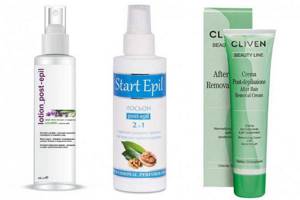
Cosmetic oils
Essential or regular oils are a great way to tidy up your skin at home. Essential oils have antiseptic, regenerating, anti-inflammatory properties:
- mint;
- rosemary;
- lemon;
- fir;
- eucalyptus;
- chamomile;
- tea tree;
- carnations;
- juniper;
- sage
Basic cosmetic oils of olive, peach, almond, rose, and sea buckthorn also perfectly relieve redness, itching, pinching, and peeling.
Essential oils should not be used in their pure form; it is recommended to dilute them with regular (sunflower oil is acceptable) oil 1:10. The mixture can be used in the bikini area, armpits, legs, face, arms.
The skin is lubricated 3-5 times a day until the symptoms disappear completely.
Hydrogen peroxide
A simple, affordable product that will help relieve irritation after hair removal and disinfect the skin. A cotton swab is moistened in a peroxide solution (3%) and wiped over the inflamed skin. Peroxide effectively relieves even severe irritation, eliminates red spots and spots after depilation, soothes and heals microtraumas of the epidermis. Rubbing is done 2–4 times a day.
Children's talc
Almost every pharmacy and children's stores sell talc. It contains substances that eliminate many unpleasant skin manifestations. The powder is applied immediately after hair removal and the procedure is repeated 2-3 times a day. Talc effectively relieves irritation from mechanical epilators, waxing, sugaring, and laser.
Traditional methods
Herbal infusions
Herbal infusions will help relieve irritation after depilation. Chamomile, calendula, mint, oak bark, sage, rosemary, oregano - these plants effectively combat dermatological problems. The infusion is prepared as follows: 1 tbsp. l. herbs (you can use a mixture of the listed herbs) are steamed with a glass of boiling water and left for 3 hours. Then the liquid is filtered, a tampon is moistened in the solution and the affected area of skin is wiped up to 10 times a day.
In this way, irritation after sugaring, waxing, machine, and any other techniques that injure the skin is very quickly relieved. Our grandmothers used herbs to get rid of many skin diseases.
Juice of medicinal plants
Aloe, Kalanchoe or golden mustache - the juices of these plants have healing properties and treat many skin diseases.
You need to take 1-2 leaves of the plant, wash, dry and squeeze the juice out of them. Apply the resulting juice to damaged skin.
Red dots after hair removal, burning, spots and other unpleasant symptoms will go away very quickly. It is recommended to use the juices of these plants even in cases of severe inflammatory processes.
Relieve facial irritation with natural remedies
Many girls remove hairs above the lip, on the chin, and at the temples. After hair removal, redness often appears on the face, since the skin in this area is very delicate.
Masks made from natural ingredients will help relieve side effects.
- Oatmeal. The flakes perfectly soothe the skin. A handful of oatmeal is steamed with boiling water and applied to the face for 15 minutes, then washed off with warm water.
- Cucumber. A piece of vegetable is grated on a fine grater and the paste is applied to the face for 15–20 minutes, then washed off with water. Cucumber juice will effectively relieve irritation on the upper lip after hair removal and quickly remove redness.
- Carrot. This root vegetable contains substances that accelerate the regeneration of skin cells. Grate the carrots and apply the paste on your face for 20 minutes, then wash off with warm water.
What to do if severe inflammation occurs?
It happens that skin irritation after hair removal turns into serious inflammation: pustules, cracks and even wounds form, and severe pain is felt when touched. Such symptoms may appear due to infection in the damaged layer of the dermis. The problem requires urgent use of medications.
- Antiseptic solutions. Chlorhexidine, Miramistin, Hexicon, Chlorophyllipt, Furacilin - these drugs are produced in the form of liquids and are used to disinfect the skin. To disinfect the skin, dilute the product according to the instructions and rub it on painful areas. Medicines kill harmful microorganisms trapped in wounds and help quickly relieve inflammation.
- Anti-inflammatory ointments. Severe inflamed irritation after hair removal with wax or any other method will help relieve ointments with antibiotics: Miramistin, Levomekol, Syntomycin, Erythromycin, Gentaxan, Baneocin.
To properly treat the skin, you should study the instructions.
Allergic irritation
The skin itches, the redness does not go away for a long time, spots or blisters appear, swelling, swelling - all this can be an allergic reaction to hair removal. In this case, it is recommended to treat the skin with steroid drugs.
Medicines in the form of ointments that relieve allergic and inflammatory symptoms from the skin: Sinaflan, Betamethasone, Momat, Hyoxysone, Triderm, Diprolene. They will almost instantly remove any skin irritation after hair removal, but they cannot be used for more than 5-6 days.
Steroid (hormonal) ointments have many contraindications and should be prescribed by a doctor. Independent use of such means is highly undesirable.
Prohibited actions
There are some actions that make sugar depilation difficult. Restrictions that should be considered before the sugaring procedure:
- You cannot use self-tanning cream, sunbathe, or visit a solarium to avoid skin inflammation the day before the procedure;
- Do not use a greasy cream, which leaves a film on the skin and makes the hair slippery;
- you should refrain from visiting the bathhouse or playing sports to avoid increased sweating;
- It is forbidden to injure the skin with a hard washcloth or abrasives to avoid infection;
- carry out chemical peeling;
- do laser resurfacing less than a year before the procedure.
You need to prepare for the sugaring process, regardless of the place and area where it is carried out, in advance in order to enjoy the excellent result for a long time.
Time passes, or 48 hours have passed
Under no circumstances should you do the following:
- do not sunbathe or visit a solarium;
- also cancel the sauna for this day;
- hot baths are also not for you;
- do not impact the depilation area: do not scratch it, etc.
But be sure to do this:
- moisturize the skin, for example, with oil, lotion, cream (after depilation and others);
- continue to saturate it with moisture at least once a day in the following days.
Remember: there are moisturizing complexes that you can make at home.
Example No. 1.
Includes:
- 20 ml grape seed oil;
- 6 drops of lavender oil;
- 3 drops of chamomile oil.
Lubricate the required areas with the mixture.
Example No. 2.
Do this:
- take 2 drops of eucalyptus oil and 2 drops of tea tree;
- mix them and add a teaspoon of vegetable oil;
- Apply the composition to the skin and wait until it is absorbed. If complete absorption does not occur, remove any remaining oil with a napkin.
Example No. 3.
An extremely good way, since aloe juice quickly relieves inflammation and moisturizes the skin well, and is extremely affordable if you have aloe growing at home.
It is necessary to cut an aloe leaf, after washing it thoroughly, apply it to the sore spot (do not remove it for 15-20 minutes).

Advantages and disadvantages
The big advantage is the ability to carry out the procedure at home . No special skills are required: getting rid of unwanted hair will be easy even for beginners. Hair can be removed above the upper lip, between the eyebrows, and there are also strips for chin depilation.
The advantage is high efficiency . Wax helps remove even short, soft hairs. When used correctly, hair is removed in 1-2 seconds, so you don’t have to spend a lot of time on epilation. Due to the removal of hair follicles, the effect lasts for a long time.
The effect of use is cumulative . As the follicle is removed, the hair in its original location stops growing. With frequent repetition, the number of unwanted hairs will greatly decrease, they will become lighter and thinner.
The cost of depilation in this way is not too high : you only have to buy strips. They are economical to use: you can use one 2-4 times. It is cheaper to use than visiting a beauty salon or purchasing sugaring paste.
Irritated skin quickly recovers , unwanted reactions disappear (in the absence of individual intolerance or allergic reactions).
There are also disadvantages . These include the pain of the procedure and the unpleasant sensations that arise during its implementation. Irritation, redness, and inflammation may appear on the face. A small amount of wax will remain on the skin, and you will have to spend time removing it.
Be careful, the components of the composition applied to the strip may cause allergies.
Treatment of skin irritation
So how to remove irritation after depilation? If inflammation does appear, one of the following manipulations should be performed to relieve irritation and stop the inflammatory process.
Apply an antiseptic to the inflamed areas of the skin (for example, Chlorhexidine or Solcoseryl), use hydrogen peroxide or 70 percent alcohol. These products dry out the skin, so after applying them it is necessary to lubricate the affected areas of the skin with a moisturizer.
If intimate areas are being treated, then depilation of intimate areas without irritation is carried out using non-alcohol solutions and creams. Immediately after hair removal, Panthenol must be applied to the depilation area. This moisturizer is great not only for the prevention and treatment of irritations, but will also be an indispensable remedy for burns.

For minor damage to the skin, tea tree oil along with vegetable oil will help soothe the skin. To do this you will need 3 tablespoons of vegetable oil and 5-6 drops of tea oil. After application, you should wait for some time until the mixture is completely absorbed into the skin.
The irritation that appears from the depilatory cream is usually allergic in nature. Therefore, it should be treated with antihistamines and ointments.
If you have aloe among your indoor plants, you can use it to eliminate the problem. To do this, a thoroughly washed aloe leaf should be cut lengthwise and applied to the damaged area.
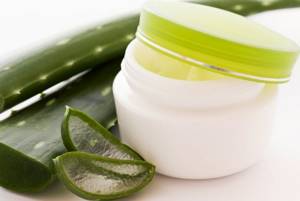
In addition to the methods described, quite common home remedies can help reduce irritation after depilation on the legs and body. These include:
- baby cream with anti-inflammatory effect;
- baby powder;
- moisturizing cream for the face, usually containing medicinal plants such as aloe, chamomile, calendula;
- medicinal herbs: string, calendula, chamomile, celandine (moisten a cotton pad in the prepared decoction and then apply it to areas of the body subject to irritation).
Thus, depilation without irritation becomes possible. Any of the above remedies will significantly reduce the degree of damage to the skin or get rid of it altogether. However, in case of persistence and progression of inflammatory processes in the skin, you should consult a dermatologist. If the depilation procedure was carried out in a salon or beauty salon, you should report your problem to the place where the procedure was carried out.
Irritation after waxing: causes and methods of removal
Waxing today is one of the most popular ways to combat the growth of unwanted hair. This method is quite effective, however, many people, especially those with sensitive skin, often experience irritation on the skin after such procedures.
In this article we will look at the possible causes of this side effect and tell you how to relieve irritation after waxing.
First signs of irritation after waxing
Irritation after waxing may appear a few minutes after the procedure, or it may make itself felt after a few hours or even the next day. This depends on the degree of skin sensitivity, the level of stress received by the body during depilation, and actions after the session.
The first sign that indicates irritation is a burning sensation or slight tingling sensation in the treated area, which intensifies over time. These symptoms appear before you even see obvious signs of a problem.
The second essential sign of irritation after waxing is redness of the skin. It can appear as a single spot, but most often small red dots are formed, abundantly scattered over the treated surface. Redness is accompanied by itching, which often reaches such a degree that you want to scratch the skin.
Advice! Try not to scratch the skin, much less scratch it. Such actions can lead to the formation of wounds, which then take a long time to heal, and even worse, to the penetration of infection into the body through wounds.
A little later, in place of the red dots, pustules with a white core may form. People with hypersensitive skin may experience a local increase in body temperature and mild chills.
Main reasons
There are many reasons for irritation after waxing. The most common ones include:
- low quality wax;
- incorrect implementation of the procedure, violation of the instructions for using the product;
- sensitive skin;
- allergy to wax or auxiliary elements of hair removal products;
- the presence of damage to the treated area of the skin (scratches, wounds);
- recent depilation of the treated area with a razor or epilator;
- contact after the procedure of the treated skin area with synthetic materials;
- applying foundation or creams or other products that contain alcohol to the treated skin.
Thus, the appearance of irritation can be caused not only by the procedure itself or the hair removal product, but also by a violation of safety rules after the session. It is necessary to strictly follow the instructions for handling wax when epilating; the slightest deviation can lead to unpleasant consequences.
Information. Many cosmetologists believe that after waxing, irritation is the body’s natural reaction to the resulting stress. It is believed that the first procedure in almost 95% will lead to irritation on the skin, which may not occur after subsequent sessions. People with very fair skin are especially susceptible to this reaction after waxing.
How to remove irritation after waxing
If you have decided to have waxing for the first time, you should definitely think in advance about how to get rid of irritation after waxing. At the same time, no one is protected from the possibility of such a side effect suddenly appearing, even if everything went well before. At home, you should always have at least some remedy in your arsenal for such a case. The sooner measures are taken to save the skin, the faster and less painful the symptoms will pass.
Important! Action to eliminate irritation must be taken immediately. Delaying is fraught with inflammation of the skin, the formation of wounds, which will then take a long time to get rid of.
Pharmacy products (oils, creams, ointments, etc.)
Pharmacies have a large variety of remedies for skin irritation in their arsenal. When choosing a specific drug, be sure to pay attention to its composition - it should not contain alcohol-containing components, as well as elements to which you may be allergic.
An inexpensive and effective remedy for skin irritation is “Rescuer” ointment. When the first signs of damage to the skin appear, you can wipe the skin with hydrogen peroxide.
For minor irritation, a moisturizing baby cream will cope well with the ailment. The following tools have also proven themselves well in this area:
- post-depilation gel “Aloe vera and arnica” from Green Mama;
- BelKosmex anti-irritation cream;
- cream-gel after depilation Velvet;
- Cicactive gel from Uriage;
- Klorane post-hair removal cream.
These products have a calming effect on the skin, moisturize it well, and have an antibacterial and wound-healing effect. They can also be used after treatments to prevent the side effects of waxing. Cicactive gel is especially recommended in case of irritation after waxing on the face.
Klorane cream, in addition to its pronounced softening, moisturizing and soothing effect, slows down the growth of unwanted hair when used regularly. This is confirmed in many reviews of the product.
If wounds have formed during irritation, or you have scratched them, it will not hurt to treat the damaged surface with furatsilin, chlorhexidine or miramistin.
But what to do if severe irritation appears after depilation? In such cases, it is recommended to use ointments for burns or products that contain panthenol. These include Depanthenol, Bepanten.
Folk remedies
If the irritation is not too severe, you can try using folk remedies. Among them, the most popular are the following:
- If there is irritation on the face after waxing, wipe the skin with ice;
- wipe the affected area with aloe juice or pulp;
- treat the damaged area with a mixture of one part tea tree oil and four parts of any other vegetable oil;
- wipe the skin with a decoction of equal parts of chamomile and chamomile (half a tablespoon per 150 ml of water, add hot water and leave for 15 minutes in a steam bath);
- wipe the damaged area with calendula decoction (dessert spoon with 150 ml of water, add hot water and leave for 15 minutes in a steam bath);
- treat irritated skin with baby powder.
Important! You cannot use several products at the same time. It is also not recommended to rinse the skin with water.
Preventing irritation
In order to prevent irritation, you need to follow several important rules:
- do not take a bath or shower for the first few hours after the session;
- on the day after the procedure, do not use hard washcloths or scrubs;
- on the day after the session, do not sunbathe, do not swim in bodies of water, including the sea;
- if depilation of the pubic area was carried out, it is advisable to exclude sexual contact on the first day;
- When depilating your armpits, you should avoid using deodorants on the day of the procedure;
- When depilating your face on the day of the session, you cannot use foundation, alcohol-containing tonics, or creams.
This video presents methods for relieving irritation after depilation, as well as tips for skin care before and after this procedure.
As a preventive measure after a wax procedure, it is recommended to treat the skin with a post-wax depilation product. This could be a rich moisturizer or baby cream. Also getting good reviews:
- ItalWax post-depilation lotion;
- Delica cooling gel after intimate depilation;
- tea tree oil mixed with several parts of another vegetable oil.
It is advisable to use products that contain extracts of chamomile, thyme, calendula or aloe.
To prevent irritation, it is recommended to steam the skin well before the procedure.
Allergy to depilatory wax and other contraindications
An allergy to hair removal wax may be accompanied by symptoms such as itching, burning, and redness of the skin. Less commonly, rashes, blisters, and a slight increase in body temperature occur. If such symptoms are detected, you should completely remove any remaining hair removal product, treat the skin with hydrocortisone ointment, and take an antihistamine.
Allergy after waxing in very rare cases can be accompanied by anaphylactic shock. If you feel a significant deterioration in your health, which is accompanied by difficulty breathing, swelling of the throat, irregular heart rhythm, or choking, you should take an antihistamine and call a doctor immediately.
In addition to allergies to wax, contraindications for wax depilation include:
- diabetes;
- varicose veins in the planned treatment area;
- epilepsy;
- very sensitive skin;
- heart diseases;
- pregnancy and breastfeeding;
- skin diseases;
- the presence of skin damage in the area that is planned to be epilated;
- the presence of moles, warts, and other formations in the treated area.
In these cases, you should resort to more gentle depilation methods.
Thus, skin irritation is quite often a natural side effect of waxing. To prevent such troubles, it is important to strictly follow the instructions for using the hair removal product and follow all safety rules.
To combat irritation, you can use folk and pharmaceutical remedies. To a large extent, this depends on the degree of manifestation of the adverse reaction. If, after all the steps taken, your irritation after hair removal still does not go away, be sure to consult a doctor.
pureskin.pro
Preparatory stage before the home procedure
Home depilation with caramel paste requires more careful preparation, since absolutely all the nuances need to be taken into account. In addition to the listed hygiene measures and the required hair length, you need to take care of a convenient place for the procedure and the presence of a mirror. You also need to buy or make your own sugar paste and prepare strips for sugaring.
Scrubbing should be done two days before the sugaring procedure. Immediately before sugar depilation, it is recommended to take a hot bath, as steamed skin is easier to part with hairs. You should not use ice to reduce pain. The result will be the opposite, since the cold narrows the pores of the skin.
Preparing for sugaring of particularly sensitive areas includes taking care of the availability of an anesthetic drug. Local anesthesia is usually used: cream or spray. The selected area is degreased using talc and baby powder. The main stages of the sugaring procedure:
- A caramel lump the size of a walnut is crushed in your hands until it becomes chewing gum. It should turn white.
- On an area of about 3 cm, distribute the paste against hair growth, pressing firmly, pressing it to the skin. The skin can be stretched for better adhesion of the bristles to the sugar mass.
- After waiting about 15 seconds, the layer along with the hairs is torn off with a sharp movement along the hair growth.
Important! The main condition for the correctness of the procedure is the distribution of the caramel mass against hair growth and sharp tearing in the opposite direction. This nuance allows you to avoid ingrown hairs
In this way, the entire area is epilated, after which it is rinsed with warm water. How many times can one area be processed if it was not possible to immediately achieve the desired result? It is not recommended to apply the paste to the same place more than 2 times. You should use tweezers to remove stubborn hairs.
Features of the procedure
Hair removal with wax strips on the face can be done at home, on your own. There are ready-made tools designed for this. They use cold wax, and the base itself is cotton. The strip, after slightly warming it in your hands, is glued to the area where excess hair is localized. Then they are kept for a short time and sharply removed against their growth.
There is also a more radical home remedy - warm wax. Pine resin is also added to this mixture, which makes it possible to cope with the most stubborn hair. Or delete a large number of them at once. Warm wax is heated at a temperature of 45 degrees (in a water bath or in the microwave). Apply a thin layer, using a special spatula, to the problem area of the face along the hair growth. Place a cloth napkin tightly on top. When the wax has cooled, it is sharply removed in a direction parallel to the surface of the face.
If you don’t have the courage to carry out the procedure yourself, you can have it done by a professional. The process goes like this:
- the face is cleaned of cosmetics;
- Apply wax heated to 50 - 60 degrees to the area of unnecessary hair with a spatula;
- quickly apply fabric on top;
- in one motion they remove it along with the wax and hair;
- The skin is wiped with a soothing composition.
Causes of irritation
With any type of hair removal, injury occurs to the follicles, that is, the hair follicles. A hair does not live alone in the skin, it is nourished by the finest blood capillaries, a system of nerve endings approaches it, which causes us, in response to changes in the environment or our nervous system, to become covered with “pimples” and standing hair on the body. The follicle has a sebaceous gland that lubricates it with its secretions.
When a hair is pulled out by the roots, this entire complex, but completely invisible to the eye, system is damaged in one way or another. Hence the skin reaction - redness, swelling, inflammation. When using a razor, microscopic damage to the surface of the skin is possible, which increases irritation and soreness of the skin. When using depilatory creams, chemical burns and an allergic reaction are possible, so popular types of depilation also do not always protect against skin irritation and inflammation.
If the body is not properly and very carefully prepared, there is a high risk of infection. After hair removal procedures, especially after epilation, the body is covered with a scattering of tiny wounds. If the skin was not clean enough or the instruments were not disinfected, or the area was not treated with special solutions after the procedure, then it is unlikely that it will be possible to avoid the appearance of traces of inflammation and even suppuration.
But there are ways to reduce the risk of redness and formation of pustules to almost zero.
Measures to prevent irritation
There are several simple rules that will help you avoid unpleasant consequences (inflammation, pimples, pustules, irritation) after removing unwanted vegetation from sensitive areas.
- It is better to use a special scrub for sensitive skin for scrubbing. If you don't have one, you can use a facial scrub. It has smaller abrasive particles compared to body scrubs. This means that he will act more delicately;
- If you have very sensitive skin, you should not use the scrub immediately after shaving. It is better to postpone the skin cleansing process to the next day.
Change dull blades regularly.
The best product for those who like to shave the bikini area. Buying a new razor will be much cheaper than treating irritation and inflammation. It would be a good idea for fans of this method of hair removal to be reminded that they should shave their hair only according to its growth, and not against it. Many girls, trying to save money, do not buy special pre- and post-shave products (foams, gels, lotions, balms), but use soap or shower gel. But the result of treating inflammation in the bikini area shows all the “cost-effectiveness” of such an undertaking.
In preventing the consequences of hair removal (acne, inflammation, ingrown hairs) after shaving, as well as hair removal and depilation, the quality of underwear plays an important role.
After such procedures, you should use only natural underwear with a comfortable cut. Synthetic lace, rhinestones and seductive styles should be left for other occasions.
You should use only natural underwear with a comfortable cut
Care after depilation with cream
The process of removing unwanted vegetation with cream requires special care after the procedure. The product contains a special lotion or oil that softens the skin. It should be remembered that there are two problems after depilation - ingrown hairs and dry skin. Manufacturers today have developed drugs that allow you to cope with problems without much time and effort. Let's consider the main stages of care:
- Hydration. It is carried out immediately after the procedure itself, especially in the first day and during the period of hair growth. Depending on your skin type, it is recommended to use oil or lotion. Oils help soften the skin, protect it from dryness and cracks. Lotion is a less concentrated fatty solution. It is good to use for skin prone to excessive oiliness. After treatment with oils and lotions included in the kit to remove unwanted vegetation, apply a moisturizer. The process of moisturizing the skin is carried out in the evening after taking a shower or bath. During the period after the depilation period.
- Fighting ingrown hairs. The cream removal process involves removing the visible part of them. The follicle is not destroyed, but the hair loses its rigidity. The problem of ingrown hairs arises. On the third day after the procedure, you should treat the epilation area with a scrub against ingrown hairs. It helps hairs break out through the skin. After using the scrub, it is recommended to apply a post-depilation cream against ingrown hairs. The product is applied after cleansing. Until the next process, it helps to avoid inflammation associated with the inability of hair to break through the skin, and the formation of purulent pimples when infected.
Slow growth. The advantages of the chemical method are that it is possible to use a cream that slows down hair growth. The disadvantage of this method is that hairs appear already on the second day after the process. The product, which slows down hair growth after depilation, is produced by leading cosmetic companies. It allows you to prolong the effect of the method of removing unwanted vegetation and increase its effectiveness. Women strive to achieve smooth skin with the least amount of time and effort. They have to use different methods of care between procedures. A product that slows down hair growth after depilation helps to prolong the effect.
Reviews from representatives of the fair sex have shown that depilation with cream deserves special attention. The process does not take much time, and it is not difficult to perform even at home. The main thing is to choose the right product. If you are doing hair removal for the first time, consult a cosmetologist. The product is easy to use. In the summer, it is possible to take it with you on a summer vacation. Does not leave any irritation on the skin. Do not forget that the composition contains chemicals. Read the instructions before use. Women significantly manage to extend the interval between procedures thanks to proper care after the method of removing unwanted hair. Choose the right depilation method and stay beautiful and attractive.
Further and further from depilation, or 4-5 days have passed
During this period, it is necessary to “scrub” the areas that have undergone depilation. Then you need to continue to do this quite regularly: 1-2 times a week. After each “scrubbing”, the skin needs to be intensively moisturized using lotions, creams and other products with a moisturizing and soothing effect. But this is the rule, there is an exception.
If the hair grows in, then “scrubbing” is performed 2-3 days after depilation. How to choose whether the procedure should be done on day 2 or day 3? Guide yourself this way: if the hair grows in a little, then on the 3rd day, if strongly, then, accordingly, on the 2nd day. You need to continue “scrubbing” with a frequency of 2-3 times a week, provided that the skin is oily or normal
If your skin is dry, then pay attention to this procedure once a week.
It is also necessary to continue “scrubbing” even when the hair begins to gradually emerge to the surface of the skin.
